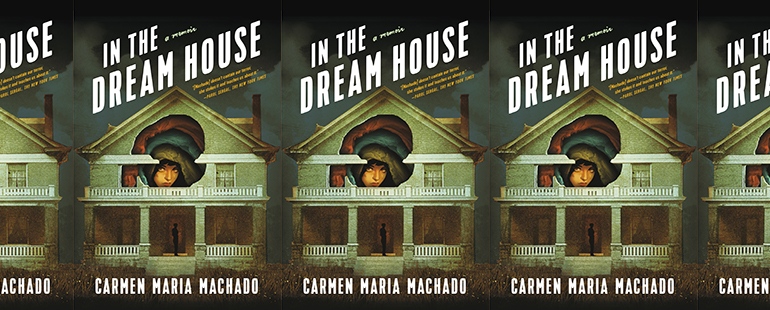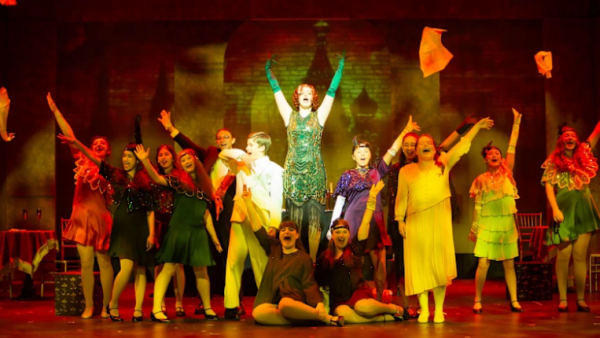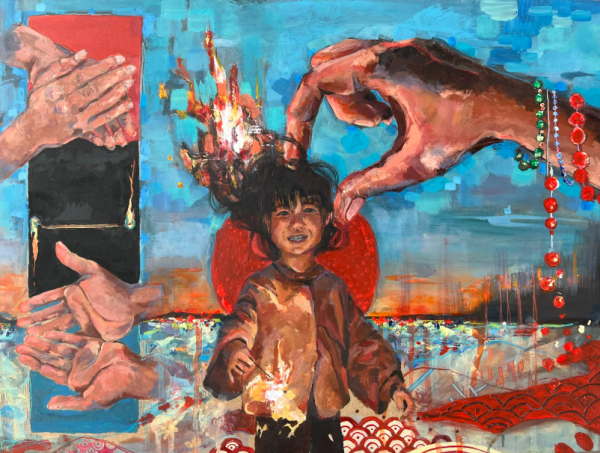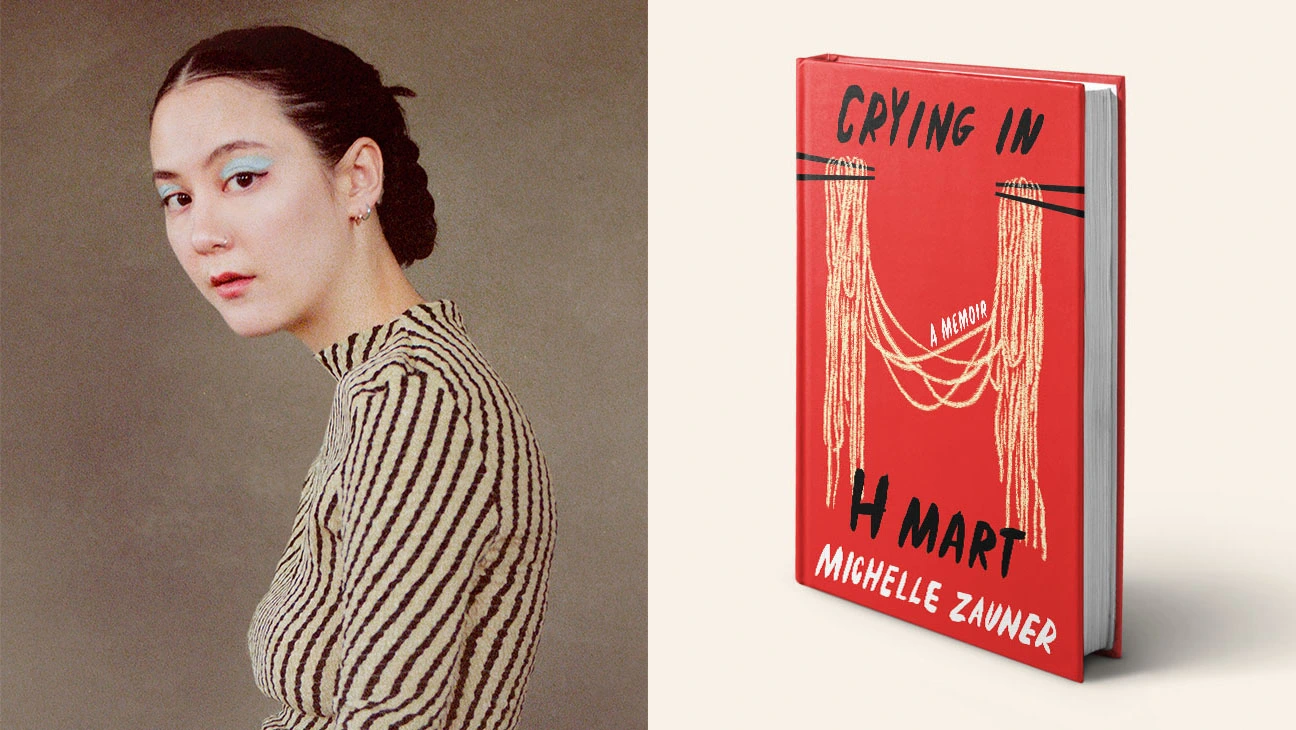Book Review: In The Dream House as Revolutionary
In the Dream House book cover
In The Dream House by Carmen Machado is the first of its kind – genuinely. It’s one of the first literary texts in history that details an abusive relationship in an LGBTQ+ context. The story takes place in a quaint, picturesque house in Bloomington, Indiana which Machado refers to as “the Dream House.” Machado and her nameless girlfriend, “the Dream Lady,” are young and hopelessly in love. The first several chapters detail an idyllic, sugar-sweet atmosphere where the couple flirt with one another constantly, marvel at each other’s writing, and are simply overwhelmed by the perfection of it all. As the story progresses, this love seemingly only deepens: Machado visits her girlfriend’s family for the first time, tries an open relationship to satisfy the Dream Lady’s polygamous needs, and even moves across the country to support her career.
After pages of syrupy adoration, the reader starts to wonder, okay this is great. But when will the drama begin? Midway through the novel, when the Dream Lady screams at Machado out of jealousy for helping a female coworker in distress, you realize –
It already has.
The chapters of peculiar comments, pointed looks, and moments of ominous silence between sugar-saturated affection were all part of the Dream Lady’s quiet transformation into her hideous, true form. Soon after, the Dream Lady explodes into a series of violent outbursts and psychological abuse that seem more impossible to escape as the novel progresses.
Prior to writing this memoir, Machado had never encountered narratives of queer domestic abuse. During intermittent chapters between the narrative, Machado explains how throughout the relationship (which was her first lesbian relationship), she lacked the context and resources to make sense of her queer experience. As an adolescent, she was only exposed to heteronormative abusive relationships in the media where the aggressive, patriarchal man degraded the helpless woman. “But what happens,” Machado asks, “when the abuser is a woman to another woman?” Queer villains – especially lesbian villains – are all too common in the limited queer representation that exists in media. From The Girlfriend’s controlling, lunatic lesbian to All About Eve’s conniving, cruel Eve, lesbians, given their identity as women, are constantly depicted as over-emotional and irrational. This caused Machado to wonder: are the stereotypes really true?
Given this context, In The Dream House is not just a novel about an abusive relationship, but about navigating a kind of relationship that has never been written about before. Machado, without the language to describe her experience, constructs her own nuanced syntax to tell her story while maintaining a heated and commanding tone. In visceral imagery, Machado unpacks her process of understanding the stereotypes of queer relationships, the pressures she felt to disprove those stereotypes, and how that desire shaped her own navigation of the relationship.
Not only is the novel revolutionary in content, it is also inventive in form and style. The writing takes on several risky architectures to tell a fiery story. From a “Choose Your Own Adventure” chapter where the reader makes choices in the relationship in the place of Machado, to flashbacks of childhood memories, chapter-long internal dialogues, and analysis of the history of LGBTQ+ domestic abuse cases, each chapter holds a new surprise that is far from predictable, breaking all rules of traditional writing and keeping you in anticipation for the next.
In The Dream House completely changed my perception of the limits of form and style in writing. Previously, I had only read canonical books with traditional forms. I always thought that poetry and fiction were two separate genres but In The Dream House showed me that prose can be lyrical too and a story can be told in a variety of structures. The novel inspired me to try experimenting with form as well; for Mrs. Deperalta’s “Choose Your Own Adventure” project, I am writing a memoir in the form of a recipe!
More importantly, In The Dream House taught me the magnitude of impact that fair and diverse representation of media has. After a long, arduous journey of trying to perfect her relationship to disprove the queer villain stereotype while enduring constant, emotional abuse, Machado teaches us the need for expanded queer representation. She writes, “by expanding queer representation, we give space to queers to be—as characters, as real people—human beings. They don’t have to be metaphors for wickedness and depravity or icons of conformity and docility. They can be what they are. We deserve to have our wrongdoing represented as much as our heroism, because when we refuse wrongdoing as a possibility for a group of people, we refuse their humanity. ”
This lesson taught me the importance of reading about the praiseworthy and flawed experiences of people of all backgrounds. As someone who is not surrounded by many queer people, I learned for the first time how societal constructs – such as the queer villain trope – that I had unknowingly encountered and consumed affects the lives of modern, queer people to a deep level. It relieved some of my ignorance around the queer experience and equipped me with the context to empathize with and support my future queer friends in similar situations. I’m thankful to have read this book and I believe that everyone should read these kinds of texts that portray the raw, unfiltered experiences of people of all backgrounds.
In The Dream House crawls under your skin and forces you to digest Machado’s painful experience from her eyes. Sometimes, it gets so raw that it becomes uncomfortable, a testament to Machado’s skill at worldbuilding an incredibly visceral story. If you’re looking for something haunting, something memorable, something real, you must read this book.








